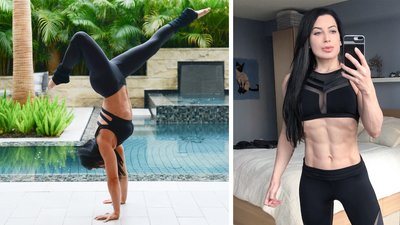Just because you've made it, doesn't mean you're done. For Dr. Sara Solomon, success means continual evolution. This powerhouse fitness personality, Team Bodybuilding.com member, coach, and dentist keeps learning from the past and experimenting to find what works over the long haul as she experiences her 40s.
Originally graduating with a bachelor's degree in physical therapy, Solomon changed course, earning her DMD (Doctor of Dental Medicine) in 2005. Solomon practiced dentistry in Toronto for 10 years, but she never left her passion for fitness behind. Even before she finished college, Solomon had earned her personal-training certification, and in 2008 she launched DrSaraSolomon.com, offering books and programs based on her own journey to a fit body.
Solomon will be the first to admit she made every mistake in the book, starving herself and logging hours of cardio as she focused on "calories in, calories out." She won a pro card in the WBFF fitness model division in 2011 and competed five times, but eventually her approach to training and nutrition led to disaster. She suffered metabolic damage, gained fat, and began to hate her workouts. Plagued with injuries, plateaus, chronic hunger, and mental anguish, she hit rock bottom.
Changing Gears
By 2015, Solomon had gotten the message. She made sweeping changes to her program, but her transition from "washed-up fitness model to athlete," as she calls it, was just beginning. She moved away from her career as a dentist to pursue her passion for training and nutrition with even more focus.
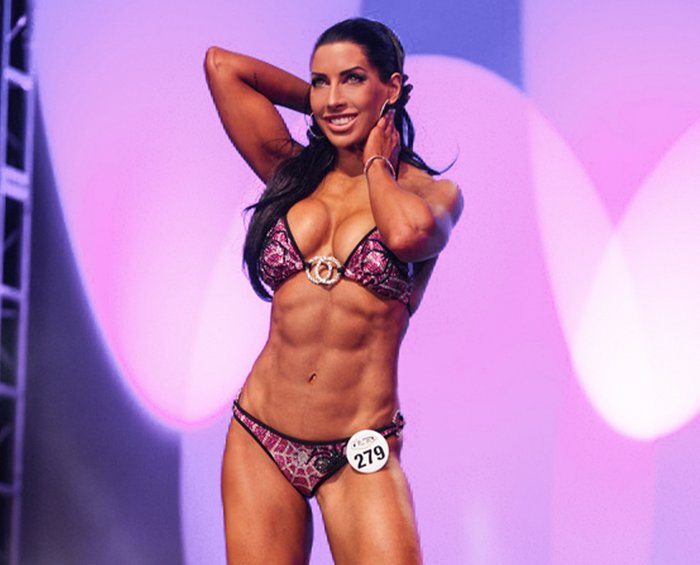
Dr. Solomon continued to refine her approach. Her current exercise program is much more intense, encompassing a variety of disciplines like strongman, pole fitness, and the principles of StrongFit training, for which she is a certified coach. She is also a Team Bodybuilding.com member and BSN-sponsored athlete, a Buddy Lee Jump Ropes Ambassador, and a NASM fitness nutrition specialist. Along the way, she has gained an impressive online following with over 70,000 YouTube subscribers.
Intent Is Everything
At age 41, intent is a key word for Solomon—the idea of focusing on what you really need and training with purpose—and she preaches that approach to her clients and followers.
She also recommends an "anti-dieting" strategy and practices intermittent fasting, in which she eats during certain hours of the day and fasts the rest of the time. She described her approach to intermittent fasting in "You Can't Out-Diet Your Training," and continues to evolve her relationship with nutrition.
Today, Solomon helps others escape the restrictive diet-and-cardio mindset through her training and social media channels. "Quit exercising to burn calories, and start training to become a badass," Solomon urges her followers.
When did you start becoming an athlete?
For 20 years of my life I trained and dieted for aesthetics, regardless of the physical and mental toll it took on me. Hitting rock bottom was the catalyst I needed to change my intent. In the spring of 2016, I made the choice to prioritize my well-being over my ego. I wanted to be able to exercise without experiencing pain, and I wanted to stop dieting. Never in a million years did I expect to become so strong and mobile.
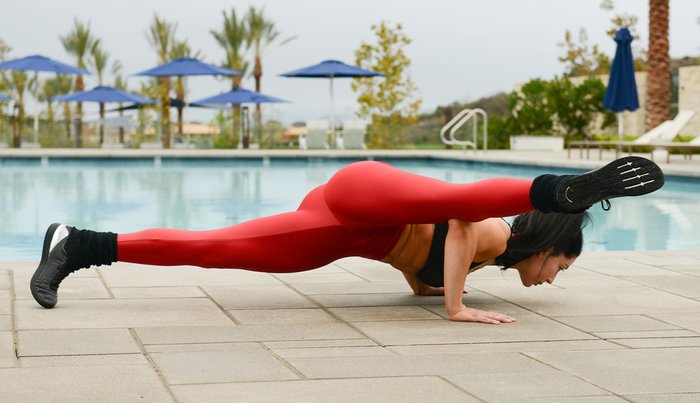
After you changed perspective, you were doing quick, intense workouts with minimal equipment. Today, you participate in StrongFit, strongman, and pole fitness. Why did your training shift again?
The awkward postures I adopted in the practice of dentistry caused me to develop muscle imbalances. They were causing me pain, and I kept getting injured instead of stronger. The way I was training was actually feeding the imbalances instead of making them better.
So I went back to school to learn how to fix my imbalances. I spent two years studying to become a StrongFit coach so I could finally get stronger. And guess what happened? I started becoming stronger!
What does "training with intent" mean for you?
Without profound intent, I end up ruining what I am doing. Intent allows me to ditch my ego and take the best action, which is not always the action with the greatest momentary reward. Rather, it's the action that offers the greatest long-term value.
For example, if I want to overcome chronic aches and pains and get stronger, I need to attack my muscle imbalances. That's why my training intent revolves around getting the correct muscles to fire, even if that means I'm devoting my training sessions to doing the "unsexy" exercises.
What do you mean by "unsexy" exercises?
Examples would be core exercises, staggered-stance Dimmel deadlifts (a variation using a shorter range of motion), end-range hip thrust holds, and bipolar scaled push-ups. The opposite would be high-skill movements like snatches, pull-ups, barbell overhead presses, and barbell squats. I don't recommend performing them unless you are balanced. Otherwise, they can actually exacerbate your imbalances.
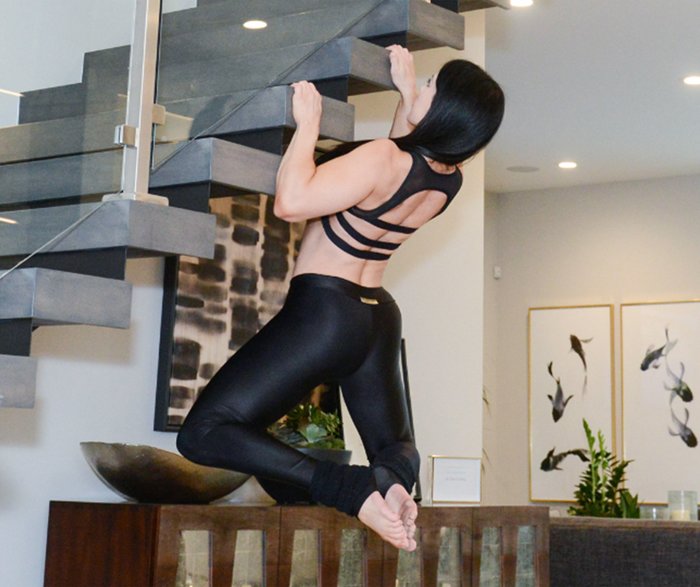
What are some of the more common imbalances people experience?
Core weakness on one or both sides can contribute to back pain, and it will have effects both upstream and downstream. Weakness of the latissimus dorsi, teres major, pec major, and short biceps head can contribute to upper-trap dominance, causing shoulder and neck pain. You see people shrugging with one or both shoulders when trying to press a barbell overhead or when they try to do a chin-up.
Weakness in the gluteus medius, gluteus maximus, inner hamstring, and vastus medialis oblique can contribute to back, hip, and knee pain. You will often see people shifting when they squat or compensating with their backs when they deadlift. I'm currently working on fixing all of the above imbalances. It's an odyssey that will take as long as necessary, using a variety of exercises.
What are some approaches that can correct these imbalances?
I am a fan of Pilates for addressing lower back and hip imbalances. For the pecs, teres, lats, and the short head of the biceps, I'm a fan of strongman exercises, like rope pulls, as well as unilateral bodybuilding exercises, such as flyes, lat pull-downs, and rows; teres major pull-downs and rows; and hammer curls. The pec stick—that thing from 1990s infomercials—is a great way to get these muscles to fire.
For the lower body, I like unilateral bodybuilding exercises with end-range isometric holds, sumo deadlifts, Anderson squats, clamshells, staggered-stance Dimmel deadlifts, bipolar sandbag squats, and deficit sissy squats. Also, I recommend my favorite strongman structural exercises. Farmer's carries, sandbag carries, and sled work give you the biggest bang for your buck.
You're doing pole fitness for the first time at age 40, with moves like the splits. How did you get into it?
In the spring of 2018, pole fitness was assigned to me as my StrongFit homework. I never would have tried it otherwise because it's very difficult to learn, I didn't want to look foolish, and I knew I would be judged because of the stigma attached to it. Nevertheless, I wanted to step outside my comfort zone.
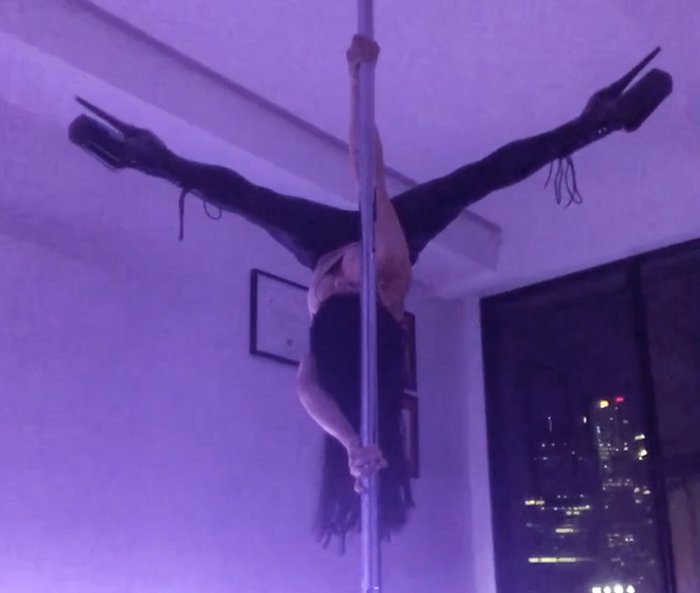
How did you approach learning the splits and other advanced moves?
It goes back to intent. My approach to learning the splits prioritizes mobility, not flexibility. If your body is not allowing you to do the splits, handstands, Ayeshas (an inverted pole move), or heavy barbell squats, there is a reason. Trying to force yourself into the splits because of your ego is a recipe for injury.
Your ability to execute the splits will depend on your structure (ability to fire the correct muscles), your ability to stabilize your spine and pelvis, and your mobility. If you have a solid structure and you can stabilize, you will be able to improve your hip mobility a lot faster than someone who is lacking structure and who has right/left imbalances. So it's a case of establishing your current abilities and taking the steps needed to address what you need to work on.
What was the hardest move for you to learn?
They've all been hard! I'd say handstand pirouettes, push-pull grip-press handstands, and Ayeshas were the hardest. They demand structure, stability, strength, and mobility. It took me two years of StrongFit training to develop those prerequisites, but once I had them, I was able to learn the moves in less than a month.
You keep talking about mobility and flexibility. What's the difference between the two?
Flexibility is your passive range of motion. It's how far your joint can be moved, regardless of muscular control. An example of passive range of motion would be splits on the ground.
Mobility is your active range of motion. It's how far you can move a joint with muscular control—your range of motion under tension. Think of it in terms of strength. People who can generate torque at the end of their range of motion are very strong—like circus performers and gymnasts. An example of an exercise using active range of motion is the downward dog split, because it requires active hip extension of the back leg.
When there is a large gap between your passive range of motion and your active range of motion, you can move in a range you cannot control, increasing your risk for injury.
The key point is, mobility trumps flexibility. The reason I can do splits without having to spend 30 minutes warming up with stretches is that I'm mobile. I spend a couple minutes doing a few openers, and I'm good to go. If you are mobile, then your free gift is flexibility.
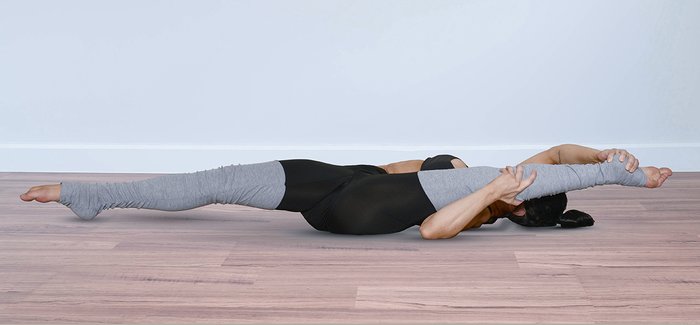
How often do you train currently, and what's a typical training session? Or is there a typical session?
I make an effort to move daily. I don't follow rules. Rules create unnecessary anxiety in my life, and anxiety precludes results. That's why I improvise and try to be random with my training. It is how I learn and make progress. My training is quite varied: Pilates, running, strongman training, jump rope training, bodybuilding, gymnastics, and pole fitness.
Let's talk about nutrition. You've been called the Intermittent-Fasting Queen. How long have you eaten this way?
I've been intermittent fasting every single day since 2012.
How's it going after all that time? What's your intermittent fasting protocol?
My daily dietary intent is to have a healthy relationship with food so I can enjoy it—in moderation—without feeling anxious. My approach is very laid back. I do not do anything I know I cannot maintain. I do not demonize any macronutrients; I do not track my calories and macros. I do not undereat, and I do not fast for more than 20 hours a day. I typically fast for 16 hours a day.
I follow just two simple rules that are easy for me to maintain. I break my fast at the same time every day, never earlier. I've been able to do that since 2012 without experiencing any anxiety. Also, I go grocery shopping with intent. If it's in your house, it's in your stomach. That's how I make food trade-offs and practice moderation.
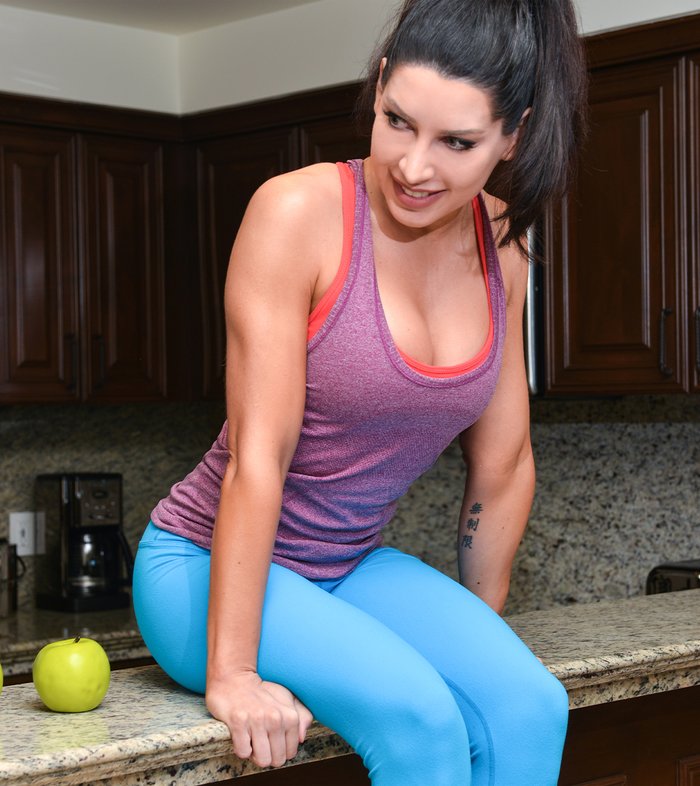
I don't let my diet micromanage me. Sometimes I will train fasted, taking BCAAs, and other times I will train in a fed state. I enjoy the freedom of having options. Options facilitate consistency. Everyone needs to establish what works best for their schedule, goals, and eating personality.
You struggled through 17 years of yo-yo dieting before you discovered a sustainable approach. Why did it take so long?
It took as long as it needed to take. I had to make a lot of mistakes to figure out what not to do. Trial and error is one of the best ways to learn.
Mistakes are not failures. In order to excel, we need to love learning more than we love winning. This means finding value in all outcomes, good and bad. We must try new things, be random, and be willing to make mistakes.
Now that you are in your 40s, what are your training goals?
My training goals are still the same: to improve my physical and mental well-being. I want to move well, I want to be pain-free, and I want to enjoy the entire process. I want to try new things, and I want to inspire others to do the same! Progress cannot be rushed. I'm exactly where I'm supposed to be.
If you want to improve your overall strength and athleticism, check out Total Fitness with Andy Speer, plus more than 50 other expert-designed fitness plans in Bodybuilding.com BodyFit Elite.



